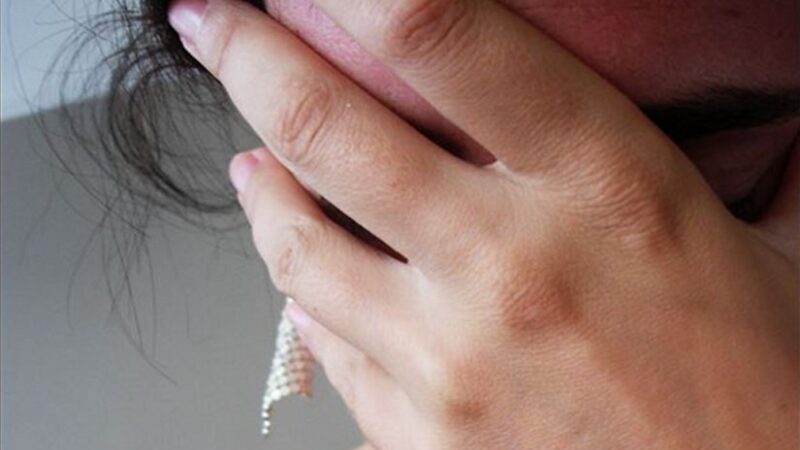Can We Predict Who Will Develop Migraine Headaches?

A migraine is not just a bad headache. It is a much-dreaded part of a neurologic disorder that has an array of possible symptoms, including pulsating cranial pain, waves of queasiness, bouts of vomiting, and hypersensitivity to light and sound. They frequently materialize unannounced and at the most inopportune of moments.
Pubescent girls with a family history of migraine headaches are especially vulnerable — yet there remain many unknowns regarding the who, when and why of the disorder. Hadas Nahman-Averbuch, PhD, a scientist at Washington University School of Medicine in St. Louis with expertise in pediatric pain and migraine disorder, is trying to change that. She is leading two observational studies: One will examine why some adolescent girls develop migraine headaches and others do not, and the other will explore how puberty plays a role in migraine headaches among boys and girls.
The single-center studies at the School of Medicine are supported by two grants totaling $6 million from the National Institutes of Health (NIH).
“During adolescence, we see a significant increase in the prevalence of migraine diagnoses in girls,” said Nahman-Averbuch, who runs the Pain Across the Lifespan lab at the university and is an assistant professor of anesthesiology. “We want to understand the changes that come before migraine headache onset and identify the girls who are at risk of developing them. The hope is that this knowledge leads to new therapies and interventions that, if given early, could prevent, manage or treat migraine headaches in adolescent girls.
“We also want to investigate how puberty affects the severity and incidence of migraine headaches inadolescentgirls and boys who already experience them, to better understand the trajectory of the disorder.”
Treatments for young migraine sufferers are limited — newer migraine medications that have hit the market in recent years are limited to those 18 and older — and more research into the often-debilitating condition in adolescents is needed.
Among the issues in getting to the bottom of why migraine headaches occur are the many triggers: among them, stress, certain foods, sleep deprivation, caffeine and fluctuating hormones. On top of that are the wide-ranging and inconsistent time delays between triggers and migraine headache onset, which complicate pinpointing a migraine’s exact cause.
The first study led by Nahman-Averbuch focuses on 200 girls ages 10 to 13. During three visits, study participants undergo magnetic resonance imaging (MRI) to look at brain connectivity between two brain regions – the amygdala and the prefrontal cortex. The amygdala plays a critical role in how we perceive and respond to pain. It communicates and interacts with the prefrontal cortex. Changes in that interaction are found in patients with migraine headaches compared with those without migraine headaches and are linked with changes in headache frequency in adolescents with the disorder, Nahman-Averbuch said.
Girls with a family history of migraine disorder are compared with girls without such history to determine if brain changes can be used to predict who will be diagnosed with the illness. The girls, migraine-free at the start of the study, are monitored for migraine development for two years.
Adolescents who have a first-degree relative with migraine disorder have been found in previous work to have higher sensitivity to pain. Nahman-Averbuch, who was involved in such research, suspects that a heightened response to sensory testing involving heat, cold and pressure stimuli may predict who will be diagnosed with the disorder. The participants rate such experiences as part of the study.
Migraine headache incidence is higher in boys before puberty and in girls during puberty, when fluctuating sex hormones aid in the transition to early adulthood. The researchers seek to figure out if a particular sex hormone – for example, estrogen, testosterone or progesterone – can help predict why adolescent girls are more likely to be affected. The research team is monitoring blood levels of various sex hormones as part of the study.
“There are many changes – biological, psychological and social – happening during puberty,” Nahman-Averbuch said. “Each could impact the pain system and be responsible for this pattern.We want to figure out what those changes are, and if they can predict who is at risk of developing migraine headaches.”
In the second study, the researchers track 180 girls and boys ages 10 to 13 diagnosed with migraine disorder over two years. Migraine-free boys with no family history of migraine disorder and migraine-free girls from the first study are part of the control group. Using the same methods as in the first study, the researchers look at how puberty impacts migraine headaches.
“Understanding the changes that come before migraine headache onset and the changes during puberty that improve migraine disorder in a certain population can help us develop new interventions and preventive strategies,” Nahman-Averbuch said. “Meanwhile, identifying adolescents who are at risk may allow us to start such interventions earlier.”
